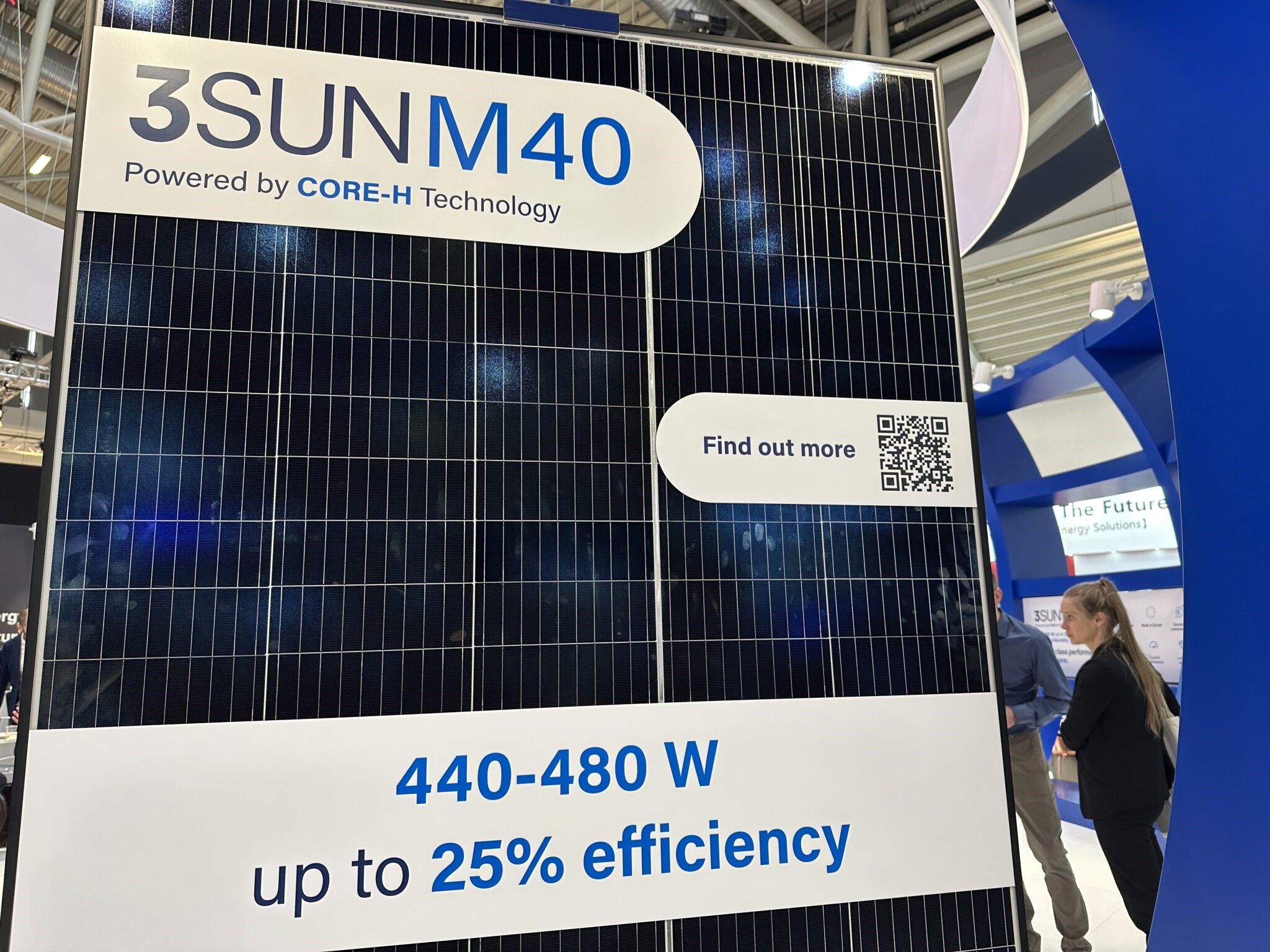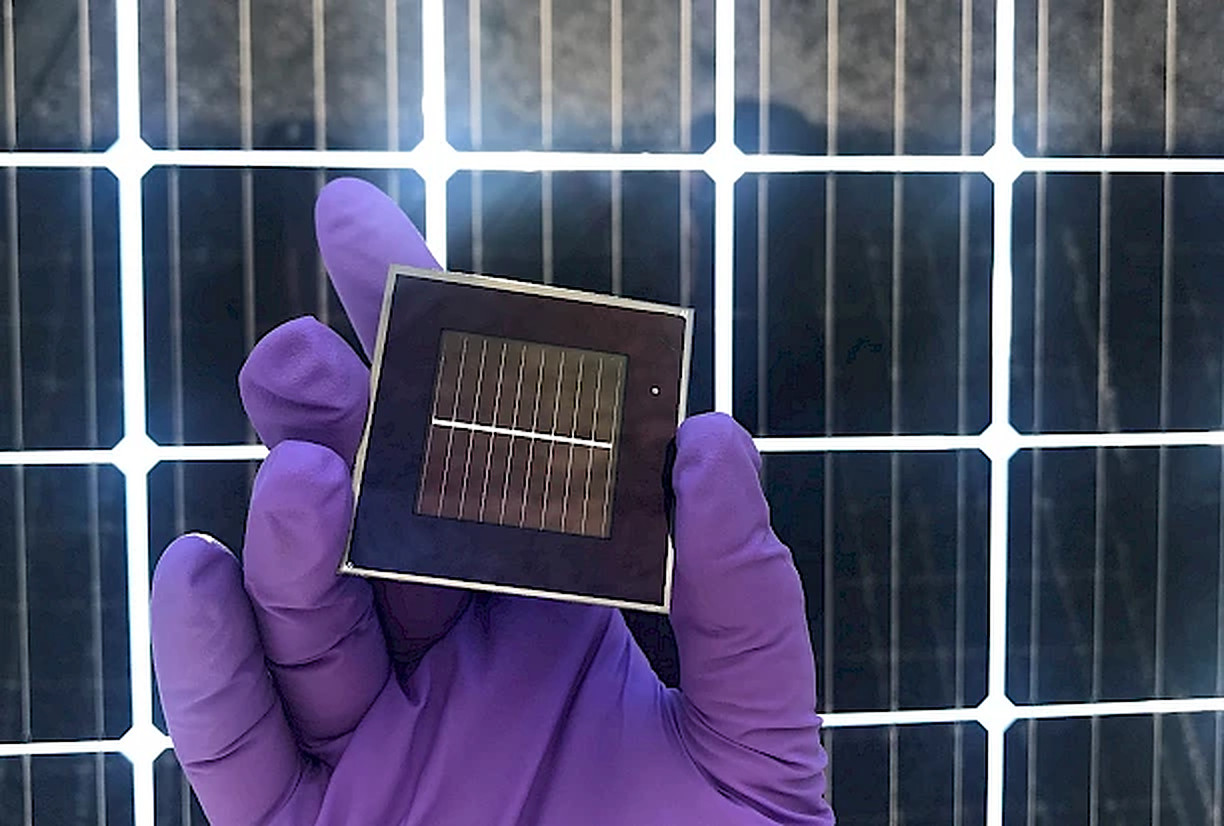At the RE+ event in Las Vegas this past September, pv magazine USA connected with 3Sun’s Giovanni Bertolino. Topics ranged from 3Sun’s burgeoning product line, their expertise in heterojunction (HJT) technology, future endeavors in Oklahoma, to a sneak peek into their next-gen solar panels.
Historically, 3Sun has produced solar modules exclusively for its parent company, Enel. However, it is now advancing plans to expand its facility in Italy and establish a new manufacturing center in Oklahoma. The strategic decision in May 2023 to make Oklahoma its primary solar hub, with a potential capacity reaching up to 6 GW, has earned the company substantial tax benefits and praise from local officials.
A recurrent question in solar industry forums is the availability of 3Sun’s modules. At the moment, unless you’re an insider at Enel’s development team, purchasing these modules is off the table. However, that exclusivity is about to change. Bolstered by a grant from the European Commission, 3Sun’s 200 MW facility in Catania, Italy, is slated to ramp up production. By 2024, the facility aims to achieve a 3,000 MW annual production capacity, positioning it as Europe’s largest solar panel manufacturing facility.
The European Commission’s pivotal backing in 2011, which enabled Enel to launch a thin film manufacturing facility, underscores this venture as both strategic and promising for the European sector.
The solar efficiency revolution will be heterojunction
Tracing back to 3Sun’s evolution, Bertolino emphasized that the company’s proficiency in manufacturing the current HJT models is rooted in its original experience manufacturing thin film solar modules starting in 2011. HJT and thin film share manufacturing characteristics that differ substantially from silicon modules. The company initiated its shift to HJT panels in 2018, launching their first automated manufacturing line the following year. By early 2020, 3Sun had announced the creation of an HJT solar cell with an efficiency of 24.63%.
Expertise in HJT has empowered the company to announce a commercial solar module with a 25% efficiency earlier this year. Set for release in the coming year, this marvel was showcased at the RE+ event in Las Vegas. For now, it’s poised to be the highest efficiency solar module available in the market.

The residential offshoot from this range promises a peak 24.5% efficiency, while its utility-scale counterpart edges slightly higher at 24.6%. The solar cells based on this product line are G12 sized (210 mm) n-type products.
Bertolino noted that the utility-scale variant, employing a glass-glass encapsulation with 95% bifaciality, degrades at a rate of less than 0.25% per year. As a result, the module retains, under warranty, at least 91.8% of its initial efficiency after 30 years. This rate closely mirrors Meyer Burger’s module degradation rate of 0.2%, a figure confirmed by CEO, Dr. Gunter Erfurt, following 1,000 hours of accelerated testing.
When asked whether 3Sun’s module had a similar ‘near zero’ degradation value in testing, but settled on a reasonable 0.25% due to legal prudence, Bertolino confirmed as much.
Bertolino spoke very highly of his company’s capabilities with HJT technology and its prospective contributions to the future of the industry. This author’s longstanding admiration for HJT technology can be found in our previous article, “The solar efficiency revolution will be heterojunction.”
Coming to America!
In May, 3Sun was awarded up to $180 million in benefits to establish their U.S.-based solar manufacturing facility in Oklahoma. The funding, a surplus from the state’s 2022 budget, requires 3Sun to create a minimum of 1,400 jobs.
Groundbreaking for the HJT manufacturing lines is slated for early 2024. Initial module production is targeted for 2024, with general availability in mid-2025. The production line is anticipated to churn out 1.5 GW of modules in 2025, scaling to 3.0 GW in 2026. Given the right business demand, the facility has the potential to expand to 6 GW.
Bartolino highlighted the strategic importance of the industrial park’s infrastructure in Inola, Oklahoma. The planned factory site is the Tulsa Port of Inola, adjacent to the McClellan-Kerr Arkansas River Navigation system, ensuring cost-effective and low carbon module transportation.

Questions regarding 3Sun’s perovskite ambitions were met with an intriguing answer: 3Sun aspires to build a perovskite-silicon tandem solar line during the Oklahoma facility’s second phase.
The company recently announced a 27.1% efficiency perovskite-silicon tandem solar cell.
3Sun said their experience with HJT solar panels has put them in a position to deliver perovskite-silicon modules. The HJT modules’ production process, especially its vapor deposition phase – a method 3Sun is familiar with from their thin film days – aligns closely with perovskite production. This deposition technique, along with HJT’s lower temperature manufacturing processes, closely resembles the method used to apply perovskite layers to standard silicon solar cells.
Bartolino stated that 3Sun’s perovskite-silicon manufacturing is “very well advanced”, noting that the company has full-sized perovskite-silicon cells. In contrast, other entities with higher efficiency records operate with smaller research cells. Bartolino informed pv magazine USA that 3Sun is currently fine-tuning its machine line, which seamlessly integrates with its extant HJT technology.
The company speculates that the perovskite + silicon production line and product might be operational in 2025, with full-scale production by the end of 2026. Deliveries are possible by 2027.
This article was amended on Oct. 23 to correctly identify the port in the U.S. as Inola.
This content is protected by copyright and may not be reused. If you want to cooperate with us and would like to reuse some of our content, please contact: editors@pv-magazine.com.









By submitting this form you agree to pv magazine using your data for the purposes of publishing your comment.
Your personal data will only be disclosed or otherwise transmitted to third parties for the purposes of spam filtering or if this is necessary for technical maintenance of the website. Any other transfer to third parties will not take place unless this is justified on the basis of applicable data protection regulations or if pv magazine is legally obliged to do so.
You may revoke this consent at any time with effect for the future, in which case your personal data will be deleted immediately. Otherwise, your data will be deleted if pv magazine has processed your request or the purpose of data storage is fulfilled.
Further information on data privacy can be found in our Data Protection Policy.